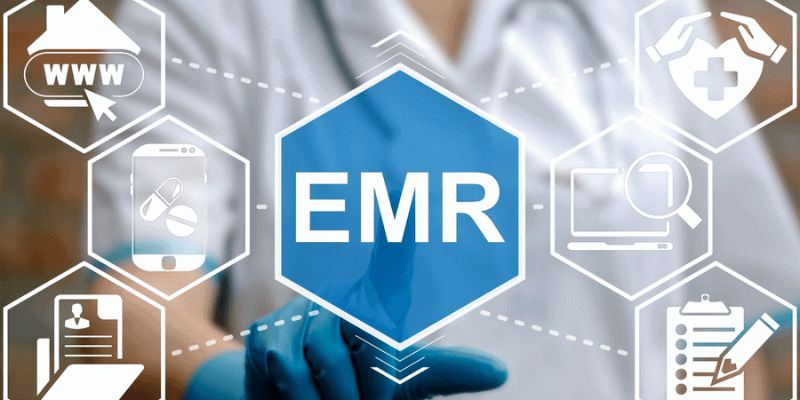
835 Remittances and RPA for Efficient Claims Data Management
In the healthcare industry, the efficient handling of insurance claims is crucial for maintaining the financial health of a practice. While Electronic Data Interchange (EDI) transactions, particularly the 835 remittance advice, have become the gold standard for processing claims, challenges still arise that require alternative solutions. One such solution is Robotic Process Automation (RPA), which can be a reliable backup method for scraping claims data from health insurance portals when 835 remittances are unavailable or insufficient.
The Role of 835 Remittances in Claims Processing
The 835 remittance advice is an EDI transaction set used by health insurers to communicate payment details to healthcare providers. It provides comprehensive information on claims payments, including which claims have been paid, denied, or adjusted, along with the corresponding amounts. This standardized electronic document is the primary method for claims data collection in many healthcare practices due to its efficiency, accuracy, and ability to streamline the reconciliation process.
Advantages of Using 835 Remittances:
- Standardization: 835 transactions adhere to a standardized format, ensuring consistency across insurance payers. This standardization simplifies the integration of payment data into the practice’s billing and EHR systems.
- Efficiency: Automating 835 remittances reduces the time required to post payments, adjust claims, and generate reports, allowing for faster revenue cycle management.
- Accuracy: Since 835 remittances are electronically transmitted, they minimize the risk of human error associated with manual data entry.
- Detailed Information: The 835 remittance includes detailed information about each claim, such as service dates, procedure codes, amounts billed, and payments received, making it easier to reconcile accounts.
However, there are situations where the primary method of using 835 remittances may encounter obstacles, such as delays in receiving remittance files, discrepancies between expected and actual data, or issues with EDI integration. In these cases, having a reliable backup method becomes essential.
RPA as a Backup Method for Scraping Claims Data
When issues arise with 835 remittance processing, RPA offers a robust backup solution. RPA can be deployed to scrape claims data directly from health insurance portals, ensuring no critical information is missed while waiting for or resolving issues with 835 transactions.
How RPA Complements 835 Remittances:
- Login and Data Retrieval: RPA bots can log into health insurance portals, retrieve the necessary claims information, and enter it into the practice’s systems. This ensures continuous access to claims data, even when EDI channels are disrupted.
- Data Validation: RPA can validate the data scraped from portals against the practice’s internal records or the data provided in 835 remittances, identifying discrepancies and ensuring accuracy.
- Filling Gaps: If specific payers do not provide 835 remittances or remittance data is incomplete, RPA can fill these gaps by extracting the missing information directly from the payer’s portal.
- Exception Handling: In cases where claims require additional attention, such as manual review or submission of supporting documentation, RPA can identify and flag these exceptions for further action by the billing team.
Best Practices for Implementing RPA as a Backup Solution
- Integration with EDI Systems: Ensure the RPA solution integrates seamlessly with your existing EDI systems. This allows for a smooth transition between using 835 remittances as the primary method and deploying RPA when necessary.
- Compliance: Maintain compliance with healthcare regulations, such as HIPAA, when using RPA for claims data scraping. Ensure all patient data handled by RPA bots is securely transmitted and stored.
- Regular Monitoring: Continuously monitor the performance of the 835 remittance process and the RPA backup system. Regular reviews help identify any emerging issues and allow for timely adjustments.
- Scalability: While RPA is initially implemented as a backup, consider its scalability. As your practice grows, RPA can be expanded to handle more complex tasks or additional insurance portals.
The Future of Claims Processing with 835 Remittances and RPA
Combining 835 remittances and RPA provides a powerful dual approach to claims data management. While 835 transactions remain the cornerstone of efficient claims processing, RPA is a valuable safety net. It ensures that healthcare providers can access the data they need to maintain smooth operations and timely revenue collection.
Integrating RPA with traditional EDI processes will likely become more prevalent as the healthcare industry evolves. By leveraging both methods, healthcare providers can achieve greater resilience in their claims processing workflows, minimizing the risk of revenue disruptions and improving overall financial performance.
We at DENmaar specialize in leveraging RPA to transform your revenue cycle management (RCM). Our experts are ready to discuss how RPA can be tailored to meet the unique needs of your practice, ensuring efficiency, accuracy, and resilience in your claims processing. Contact us today at 844-727-3627 to learn more about how we can help you enhance your RCM strategy and secure your financial future.
Related Posts
Tips to reduce contradictions of mental and behavioral health
Medical billing is a complex process in which medical billing for mental health...
What is an EMR system? What are the types, benefits, and features of an EMR system?
Electronic medical records Electronic Medical Records (EMR) stores and...
835 Remittances and RPA for Efficient Claims Data Management
In the healthcare industry, the efficient handling of insurance claims is crucial...
Impact of AI on Medical Billing and Coding
By Healthcare Tech Outlook For virtually all of the significant health IT...



